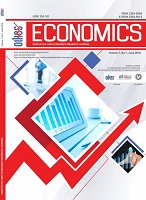Impact of Flexicurity Policies on the Romanian Labor Market
Impact of Flexicurity Policies on the Romanian Labor Market
Author(s): Adriana Grigorescu, Arina Mihaela Niculescu (Diaconu)Subject(s): Labor relations, EU-Accession / EU-DEvelopment, Human Resources in Economy, Labour and Social Security Law
Published by: Oikos institut-Istraživački centar Bijeljina
Keywords: flexicurity; European perspectives of the labour market; innovation; unemployment; lifelong learning; human resources;
Summary/Abstract: Along with joining the EU and with the desire to be compatible with the European labor market, flexicurity begins to penetrate gradually the Romanian labor market, becoming a topical concept, an economic and social recovery tool. In the simplest possible way, flexicurity can be defined as the compromise between flexibility and work safety. The flexicurity principle was born as a solution to the European dilemma: how to increase the competitiveness of European enterprises in global competition without sacrificing the European social model. Although a gradual passage is attempted, the tradition of a profession inherited from one generation to another or a stable job still exists in the human resource mentality, but it no longer exists in the present society. The concept of flexicurity is relatively new, introduced in Europe in 2006, when the principles of flexicurity were developed, but they were implemented according to the economic specificity of each EU member state. The purpose of this paper is to analyze the effects that EU accession has had on the Romanian labor market and the subsequent steps to harmonize Romania with the European Union requirements from the point of view of human resources management, flexicurity at the labor market. In Romania, the flexicurity balance is balanced, in the sense that the trade unions support a broader level of security, and the employers tend to a greater degree of flexibility. In conclusion, the Romanian labor market to develop a high degree of flexicurity must aim at increasing employment and reducing long-term unemployment, promoting workplace security and reducing the rigidity of labor law, especially in case of voluntary dissolution of firms, or of collective redundancies. In addition, the flexibility of collective and individual work contracts is also sought.
Journal: ECONOMICS-INNOVATIVE AND ECONOMICS RESEARCH JOURNAL
- Issue Year: 7/2019
- Issue No: 1
- Page Range: 7-18
- Page Count: 12
- Language: English

